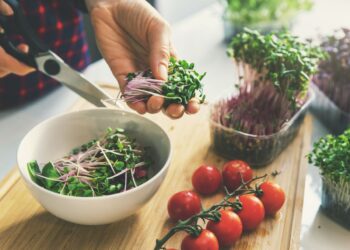Agencies-Gaza post
10 ways to wreck your belly Fat loss goals: Dietitians
Losing belly fat is such a frustrating aim for so many people because it can be hard to pinpoint a specific food or behaviour that’s the root problem of weight gain.
There are many ways we can sabotage our efforts to eat healthily and lose weight. After all, food is everywhere we discuss today, and the greatest volume of choices seem to be those high in calories and in enticing flavor that keep us eating more and more.
That’s why dietitians are so adamant about practicing mindful eating. It’s that awareness of the temptations and our responses to them (the munching without thinking) that can give us the greatest control over what and how much we consume. So, to put mindful eating into practice, put these fat-loss wrecking habits on your radar. Then try these Mindfulness Hacks to Lose Weight.
Eat too little

We’ve been indoctrinated into thinking that eating as little as possible is the most effective way to lose weight when that approach often backfires.
“Not only can this lead to increased cravings and potentially feeling more out of control around food, but entering the starvation zone can slow down your metabolism through adaptive thermogenesis,” says medical board member Lisa Moskovitz, RD, a registered dietitian with the NY Nutrition Group and author of The Core 3 Healthy Eating Plan.
Your body needs a certain number of calories and nutrients to function properly. Threatening that basic need can cause your body “to hold onto fat cells and send your body into a protective, premature plateau instead of burning body fat,” she says.
Don’t eat enough whole foods.
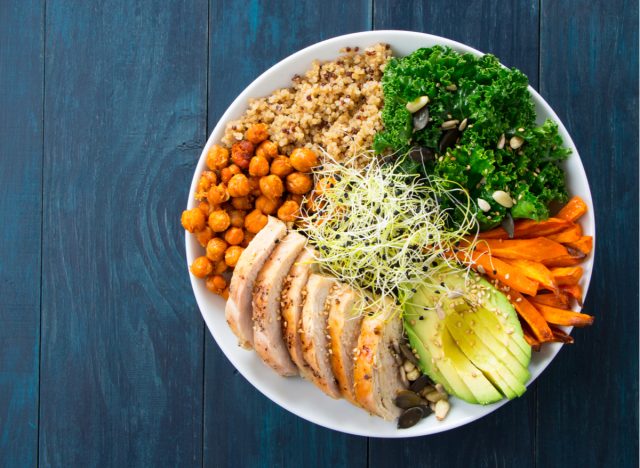
If you’re not eating foods in their whole, natural form regularly, you are likely eating too many overly processed, empty-calorie foods like cakes, cookies, and the like that can sabotage your weight loss efforts.
“Processed foods tend to be high in calories, saturated fat and added sugar and low in nutrients your body needs to stay healthy,” says medical expert Toby Amidor, MS, RD, CND, author of the best-selling Diabetes Create Your Plate Meal Prep Cookbook. “There’s no need to stay completely away from these foods but try to fill up on wholesome foods like fruits, vegetables, whole grains, nuts, seeds, lean protein, low/nonfat milk and dairy, and healthy fats first and then if you are craving sweets, make it a small portion.”
Don’t rake in enough leaves.
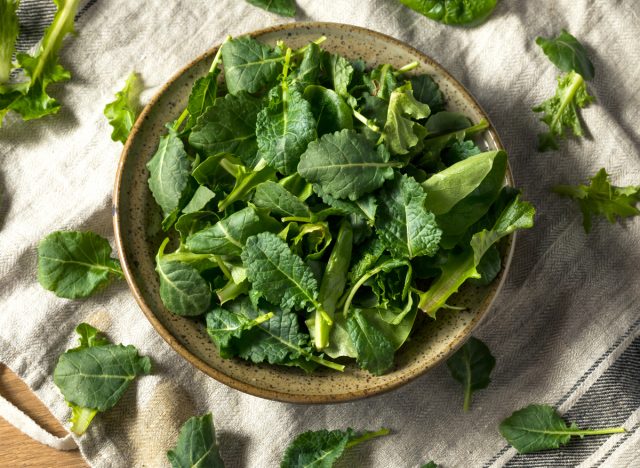
Leafy greens are powerhouse weight-loss foods. Why? They deliver mostly water and healthy nutrients for very few calories.
“Fresh leafy greens from spinach to kale to romaine lettuce take up a significant volume on our plate and help ‘trick’ us into feeling more satiated,” says medical board member Molly Hembree, MS, RD, LD. “Leafy greens provide only about 5-10 calories per cup, and this barely makes a dent in our calorie needs for a meal or snack. They also provide fiber, vitamins A and C, folate, and other beneficial compounds to help control our health and body weight.”
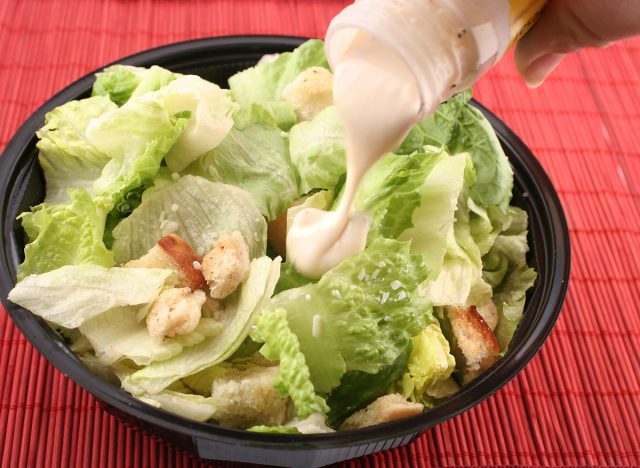
You can turn a healthful, fresh vegetable salad into a total calorie bomb and not even realize it by pouring on heavy salad dressings, warn medical experts Tammy Lakatos Shames, RDN, CDN, CFT, and Lyssie Lakatos, RDN, CDN, CFT, also known as The Nutrition Twins. Creamy dressings like ranch and Caesar can pack about 12 grams of fat and more than 140 calories in a two-tablespoon serving (and most people use more).
“Instead of calorie-dense oils and fatty dressings, use lemon; spritz it on salads, vegetables, fish, chicken, rice dishes, and more,” they say. “It’s a flavor-enhancing trick used by top chefs to build a lot of flavor while keeping meals light.”
Studies suggests lemon’s polyphenol antioxidants may help to suppress body weight and body fat accumulation.
Forget about fiber.
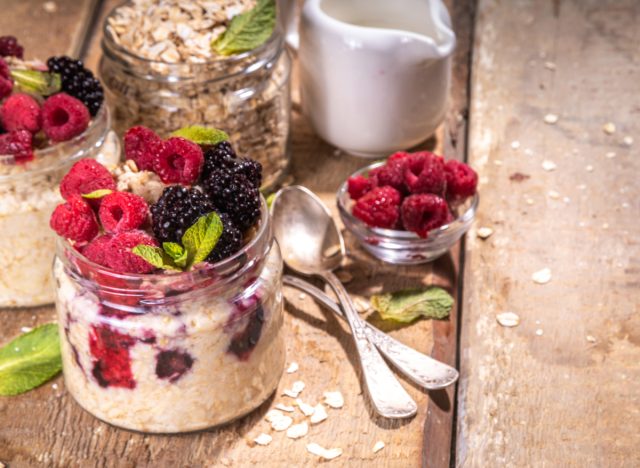
“Fiber helps keep us full and break the cycle of overeating that may lend to excess calorie consumption and weight gain,” says Hembree.
But bland oatmeal isn’t your only option.
“Berries, ideally blackberries or raspberries, have a high-fiber content at five grams or more per serving,” she says. “Throw blackberries into your next oatmeal or raspberries into your next pudding or yogurt parfait.”
Drink too many calories.
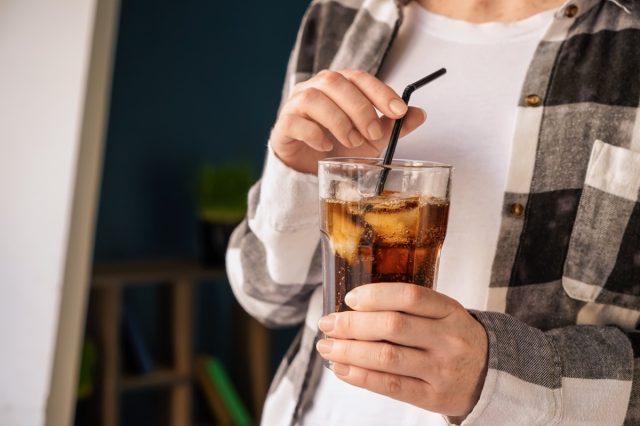
You’ve heard the term “liquid lunch.” It doesn’t only mean having a beer at noontime. High-calorie beverages are often a sneaky way to consume more calories every day than you realize. Make water, sparkling water, and unsweetened iced tea your go-to beverages.
“We tell patients to reconsider any drinkable calories, like soda, juice, and even healthy ‘green’ smoothies or juices, because they are not typically seen as a meal,” says Avantika Waring, MD, and Chief Medical Officer at 9am.health. “Most of them contain sugar. Make sure to check the nutrition facts on all beverages you buy and drink.”
Use added sugar packets.
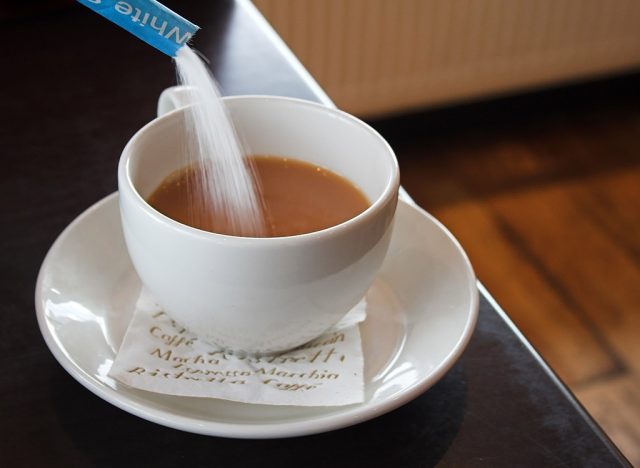
Are you in the habit of shaking those paper sugar packets before dumping them into your coffee shop beverage? Satisfying, isn’t it? Or maybe you prefer squirting those sugary flavored syrups into your coffee. Sweetening your beverages or cereal with sugar can add up to lots of added sugar calories without you realizing it.
The Nutrition Twins recommend replacing sugar with cinnamon. “You’ll avoid the extra calories, and the inflammation sugar causes that’s linked to weight gain,” they say. Plus, cinnamon has weight loss and blood sugar benefits.”
A 2019 study in the International Journal of Food Science suggests that as little as a 1/3 teaspoon a day of cinnamon can lower blood sugar, cholesterol, and triglycerides.
“Sprinkle cinnamon in your coffee, cereal, smoothies, popcorn, yogurt, oatmeal, muffins, baked goods, and more,” the Nutrition Twins advise.
Hang with partiers.
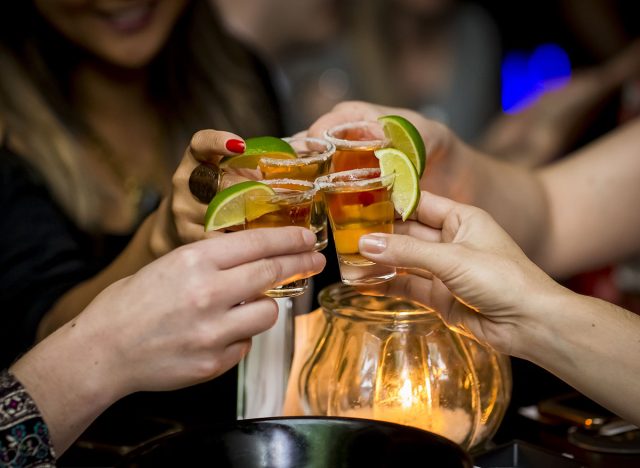
Don’t ditch your friends, but do be aware that social pressure can certainly lead to a higher food intake at dinner than you really planned on.
“Whether it’s an alcoholic drink or getting several desserts, having friends around who don’t necessarily support your weight loss efforts can be difficult,” says Amidor. “Your best bet is to review the menu in advance and determine, based on your intake for the day, what you’ll be eating. It is okay to leave room for dessert if you know your friends like to order it, but recommend sharing one dessert with one or two other people.”
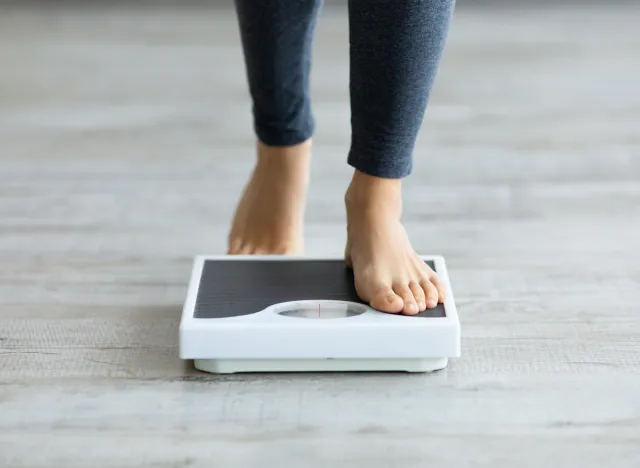
Stepping on a weight scale can be a useful tool for losing weight. Or not. For one, it doesn’t always accurately reflect the progress you’re making in losing body fat.
“Relying too much on total pounds can be discouraging and make it difficult to stay motivated,” says Moskovtiz. “Instead of worrying about your weight, pay attention to non-scale successes such as improvement in energy, digestion, sleep, and mood stability.”
A more reliable way to get accurate numbers if you need them to stay motivated is body composition analysis, which reveals your body fat versus muscle mass versus water weight.
Don’t write yourself reminders.

All of the behaviours written above are just words if you don’t remember them. So, grab a pen.
“The best tool to help you recognize self-sabotaging behaviours is by keeping a journal,” says Moskovitz. “Don’t just track the food you eat, but also portions, hunger and fullness levels, emotions involved around mealtime, and where you are during the meal. Writing down food behaviours in real time is a highly effective method to stay accountable and self-aware.”












